Carbon Monoxide Leak Detector
Brand: FORENSICS DETECTORS
Model: FD-600-CO
Data Logging: Click Here
User Manual: Click Here
Blog Article: Click Here
Features





Specifications
CO Range: 0 - 1000 ppm
CO Resolution: 1ppm resolution
Error: ≤ ± 5%
Response: ≤ 20 sec
Working Temp: 14F - 122F, <95%RH
Battery: DC 3.7V Li-on battery, 3200 mAh
Gas sensor life: 2-3 years
Explosion-proof grade: Ex ib IIB T4 Gb
Protection grade: IP65
Weight: 14 oz
Dimensions: 5.1 in × 2.6 in x 1.2 in
Charge time: 3 hours
Operating time: > 10 hours
Pump rate: 0.1 - 0.3 LPM (100 - 300 cc/min)
Calibration: USA NIST traceable calibration
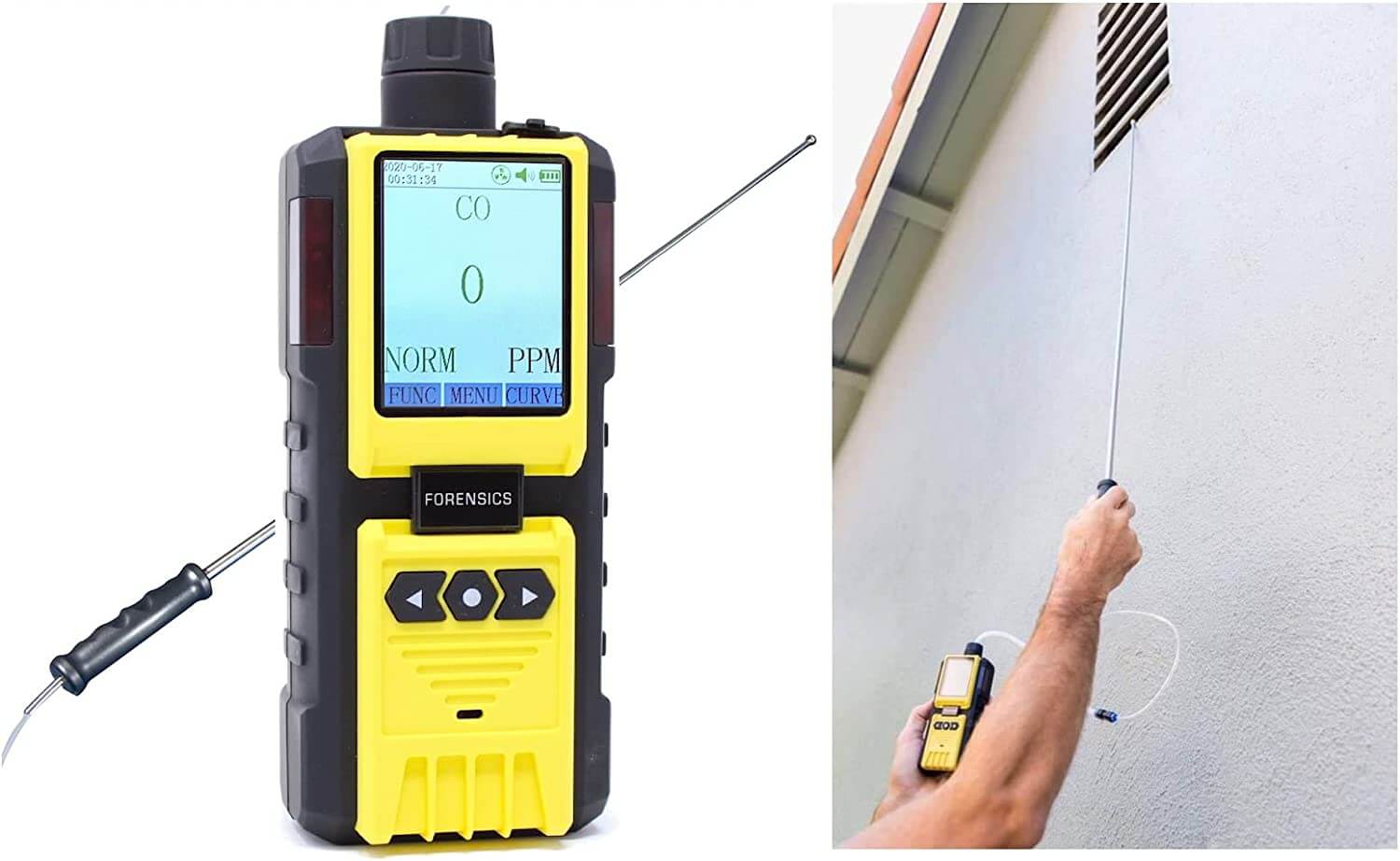
In the Box?
- CO Analyzer with Built-in Pump
- 4ft Probe
- Electrochemical CO Sensor
- USB Charging Cable and Charger
- User Manual
- USA Technical Support
- Stainless Steel Belt Clip
- Carry Case
- USA NIST Calibration Document
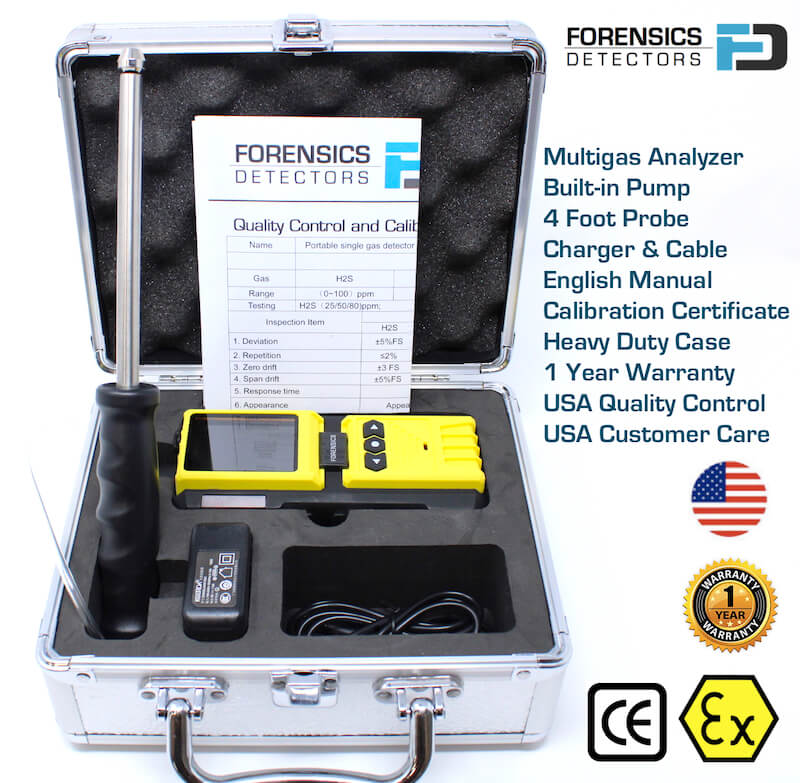
Best Carbon Monoxide Leak Detector
The Carbon Monoxide Leak Detector is used to monitor Carbon Monoxide leaks in boilers, heaters, and gas appliances to ensure no carbon monoxide is leaking or back-drafting. The unit has a sensitive resolution of 1 ppm and a high range of 1000 ppm. This Carbon Monoxide Leak Detector is designed with a built-in pump, making it excellent for detecting carbon monoxide very fast and hence excellent to detect carbon monoxide leaks. It also features an extendable probe for checking leaks in hard-to-reach vents and registers. The analyzer is built with a very sensitive electrochemical sensor with USA NIST traceable source calibration. Its color screen, large digits, and real-time graphing make it easy to use and interpret.
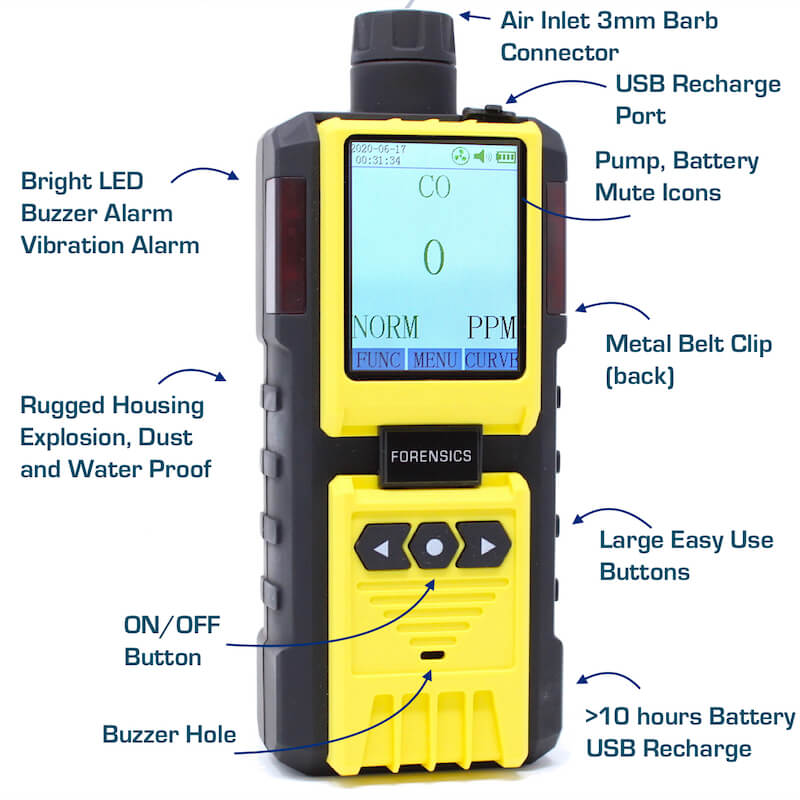
CO Leak Detector Accessories?
How Can a Carbon Monoxide Leak Occur?
Carbon monoxide gas can leak into indoor spaces through various sources and mechanisms. Here are some common ways carbon monoxide can enter an indoor environment:
- Appliances & combustion: CO gas may leak if a fossil fuel-burning appliance is faulty. Such as a damaged heating system with a cracked heat exchanger. These are unintended escape and leak paths exhaust gas traverses that may enter the occupied indoor area and create a serious CO gas hazard.
- Blocked or damaged vents: Vents and chimneys are designed to safely carry exhaust and carbon monoxide out of a building. If these ventilation systems become blocked by debris, snow, bird nests, or other obstructions, or if they are damaged or improperly installed, carbon monoxide can accumulate and leak back into the living space.
- Vehicle exhaust: If a vehicle is left running in an attached garage or if exhaust fumes from nearby roads or parking areas enter a building through open windows or inadequate ventilation, carbon monoxide can infiltrate the indoor environment.
- Backdrafting: Backdrafting occurs when there is negative pressure inside a building, causing outside air to be drawn in through vents or flues instead of being expelled. This reversal of airflow can result in exhaust carbon monoxide from appliances coming back into the living area.
- CO Leaks from Neighbors: In apartments and condos, it is common that a central pool heater, furnace, or boiler can contaminate adjoining spaces. In addition, adjacent vehicle parking garages may also contaminate and leak carbon monoxide into the indoor spaces.
- CO Leaks from Remodelling: I have also seen small engines such as mixers, grinders, and other small engines used in building and also triggering carbon monoxide leakage and poisoning.
Who Uses a Carbon Monoxide Leak Detector?
- Inspectors: Professionals conducting inspections use carbon monoxide CO leak detectors and analyzers to assess the air quality of the indoor space. This could be to check to ensure OSHA levels are not being exceeded.
- Industrial and Workplace Safety: Carbon monoxide CO leak detectors are utilized in industrial settings, factories, warehouses, and other workplaces where fuel-burning equipment or vehicles are used to ensure a safe working environment and comply with occupational health and safety regulations.
- Homeowners: Individuals who own or rent homes use carbon monoxide leak detectors to check for leaks to ensure safety.
- Property Managers: Those responsible for managing rental properties, apartment complexes, or commercial buildings often use carbon monoxide leak detectors to check CO levels.
- HVAC Technicians: Heating, ventilation, and air conditioning (HVAC) professionals use carbon monoxide leak detectors during routine maintenance or repairs of heating systems to check for potential leaks or faulty combustion.
How to Test for a Carbon Monoxide Gas Leak?
To test for a carbon monoxide gas leak, take the following steps:
- Use a CO Leak Detector: Acquire a carbon monoxide leak detector and use it at suspected leakage locations. These locations may be around appliances, HVAC registers, vents, flue connections, and indoor locations.
- Monitor the Carbon Monoxide ppm Readings: Allow the carbon monoxide leak detector sufficient time to sample the air and provide accurate readings. Monitor the detector's display or indicators for any changes in carbon monoxide levels.
- Leak fixing: If a leak has been found. Take note of its location and tag the location. Address the leakage with an appropriate engineer or technician.
What Does A CO Gas Leak Smell Like?
Carbon monoxide (CO) gas is odorless, lacking any distinct smell. This makes it highly dangerous, as it cannot be detected by our sense of smell. Unlike gases such as natural gas, which have added odorants for detection, carbon monoxide has no specific scent. Relying on your sense of smell to detect a CO gas leak is unreliable. To ensure safety, it is essential to have functioning carbon monoxide detectors installed, as they are specifically designed to detect the presence of carbon monoxide and provide an audible alarm when dangerous levels are detected.
How to Test for a CO Gas Leak?
If you suspect you have a carbon monoxide gas leak, you should use a carbon monoxide gas leak detector to inspect.
- Begin by turning on the Carbon Monoxide Leak Detector and allowing it to start operating after the countdown.
- Next, perform a quick bump test to ensure the analyzer is functional. You can do this by using CO bump gas. The point here is to confirm the Carbon Monoxide Leak Detector is indeed operating.
- Once you have completed the bump test, take the Carbon Monoxide Leak Detector and scan the area of interest. Be patient and thorough to ensure you capture any CO gas.
- Observe the detector's response. The units have a digital readout in PPM so it is very sensitive.
- If you have confirmed a Carbon Monoxide gas leak, ensure you take appropriate action to maximize safety.
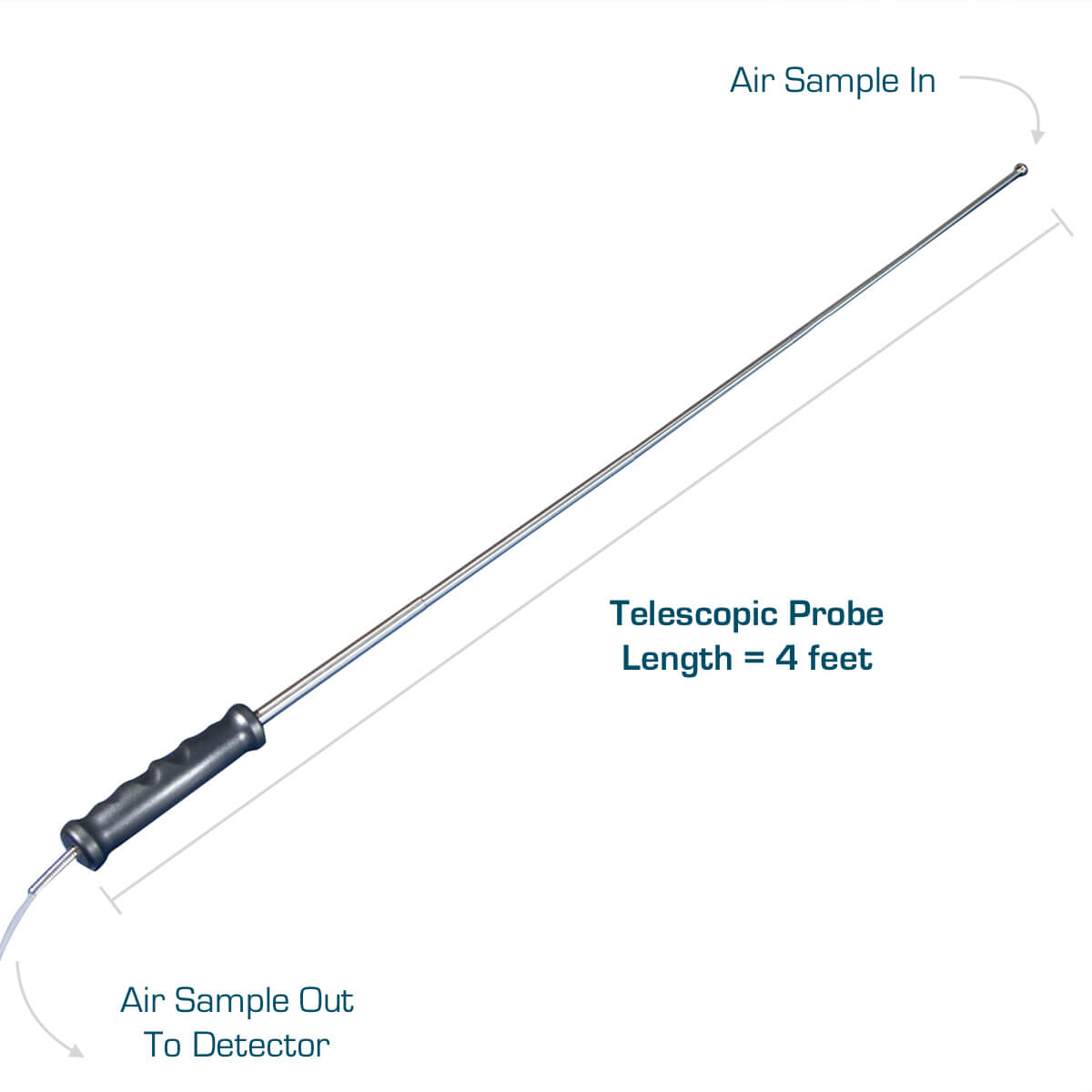
How Long Does the Carbon Monoxide Sensor Last?
The lifespan of a carbon monoxide electrochemical sensor is about 3 years. Some last up to 10 years. The sensor's lifespan is influenced by factors such as operating temperature, humidity, exposure to contaminants, and the frequency of calibration and maintenance.
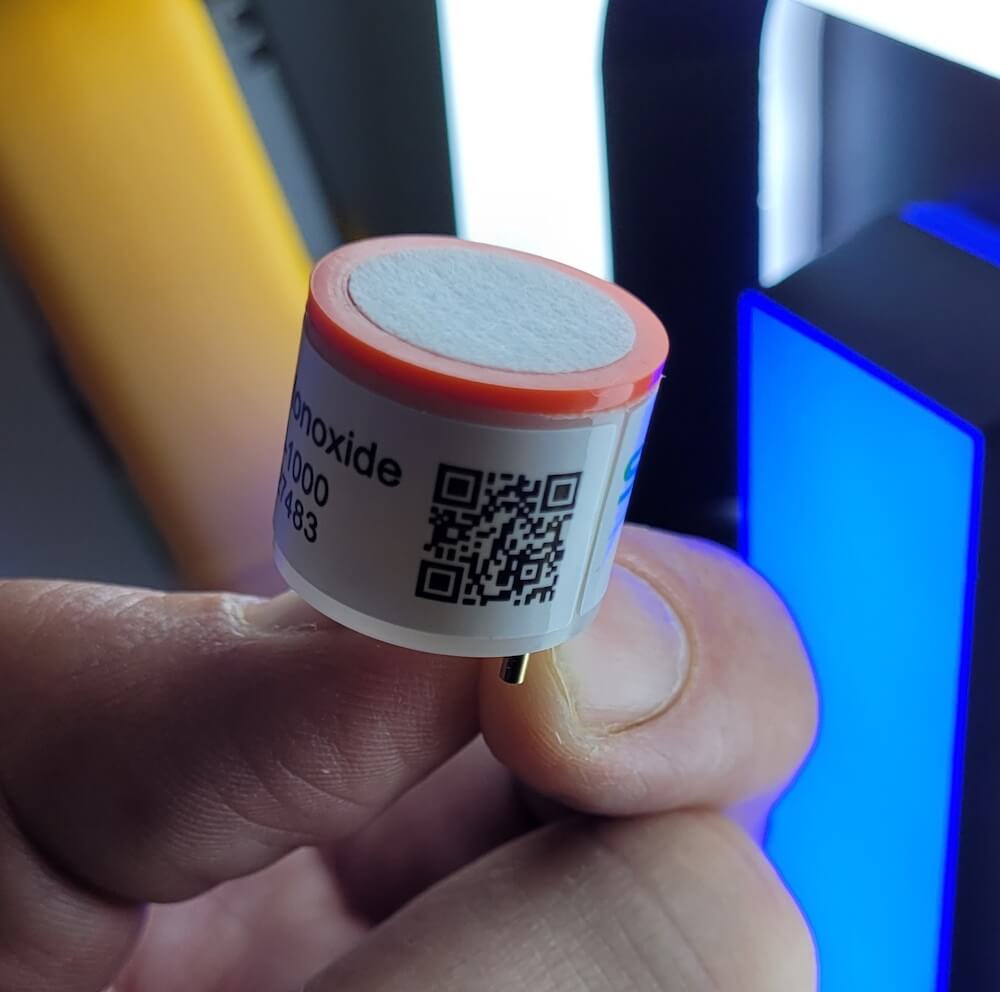
How often should I test or calibrate my Carbon Monoxide leak detector?
You should bump test before using the Carbon Monoxide leak detector. Calibration should be performed between 6 to 12 months. Calibration can be done by our lab or you can perform the calibration yourself with our video tutorials.
To calibrate the carbon monoxide leak detector, follow our calibration tutorial and ensure you will need the below items:
Calibration T-piece & Tubing
Calibration Gas (CO)
Bump Gas (CO)
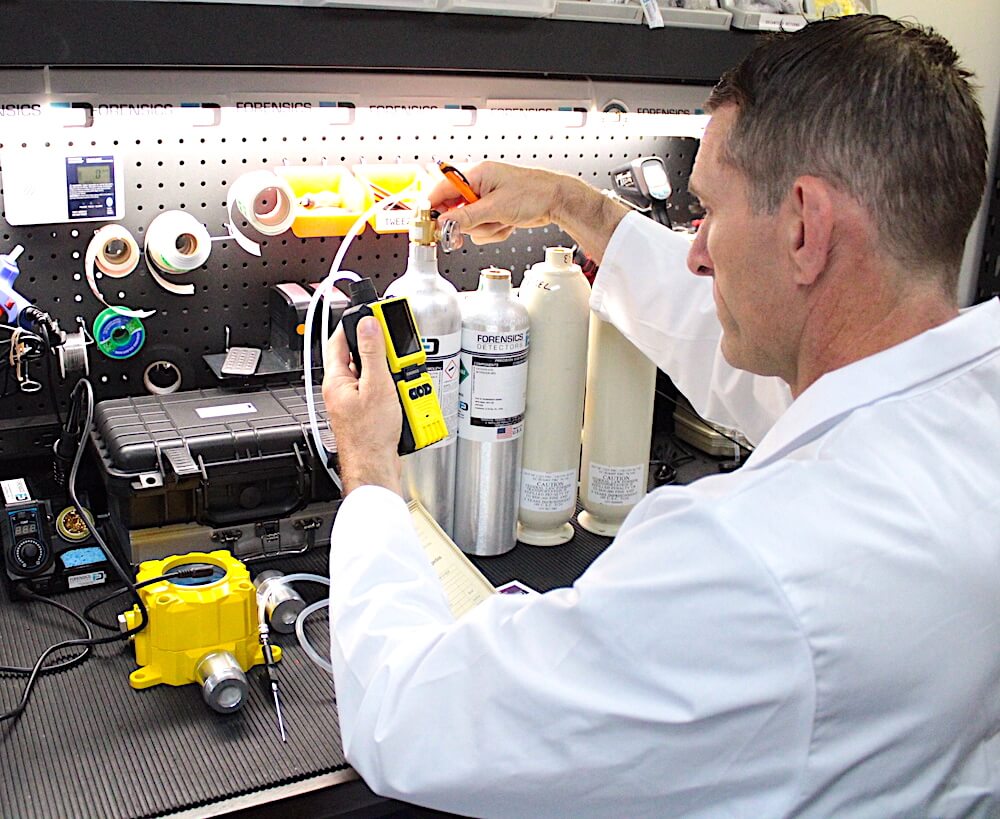
How do you know if you have a Carbon Monoxide Leak?
Detecting a carbon monoxide (CO) leak is crucial for your safety since carbon monoxide is a colorless and odorless gas that can be extremely dangerous. Here are some signs that can help you identify a potential carbon monoxide leak:
- Physical symptoms: Exposure to carbon monoxide can cause various symptoms, such as headache, dizziness, nausea, shortness of breath, confusion, and weakness. If you experience these symptoms while you're indoors, and the symptoms improve when you go outside, it could indicate a carbon monoxide leak.
- Appliance Yellow or flickering pilot light: If you have a gas appliance, such as a stove, furnace, or water heater, and you notice that the pilot light is yellow or flickering instead of being a steady blue flame, it could be a sign of improper combustion, which can produce high levels of carbon monoxide.
- Soot or excessive condensation: Black sooty marks around your gas appliances, walls, or vents, or excessive condensation on cold surfaces such as windows, can be indications of an inefficient or malfunctioning combustion process, which can produce carbon monoxide.
- Carbon monoxide detector alarm: Installing carbon monoxide detectors in your home is highly recommended, particularly a low-level CO detector for faster and earlier warning than a typical UL2034 carbon monoxide detector. These devices can alert you with an audible alarm if they detect high levels of carbon monoxide in the air. If your carbon monoxide detector goes off, or if it shows a reading above the acceptable level, evacuate the premises immediately and contact emergency services.
If you suspect a carbon monoxide leak using a carbon monoxide leak detector to find such a leak will help take corrective measures. When a home doesn't have much air circulation or air exchange with fresh air, carbon dioxide (CO2) can accumulate and also make occupants feel unwell.
How Does a CO Leak Detector Work?
Carbon monoxide analyzers monitor the presence of carbon monoxide gas in the air using electrochemical sensors, which are cost-effective and commonly used in units priced below $500. When exposed to carbon monoxide, these sensors produce a voltage output that increases linearly with the concentration of carbon monoxide. This allows the analyzer to display a quantitative representation of carbon monoxide levels in parts per million (ppm). The relationship between the voltage output and the CO ppm reading is established through calibration, where a known concentration of CO gas is used to determine the corresponding output voltage of the sensor. This calibration process ensures accurate and reliable measurements from the analyzer.
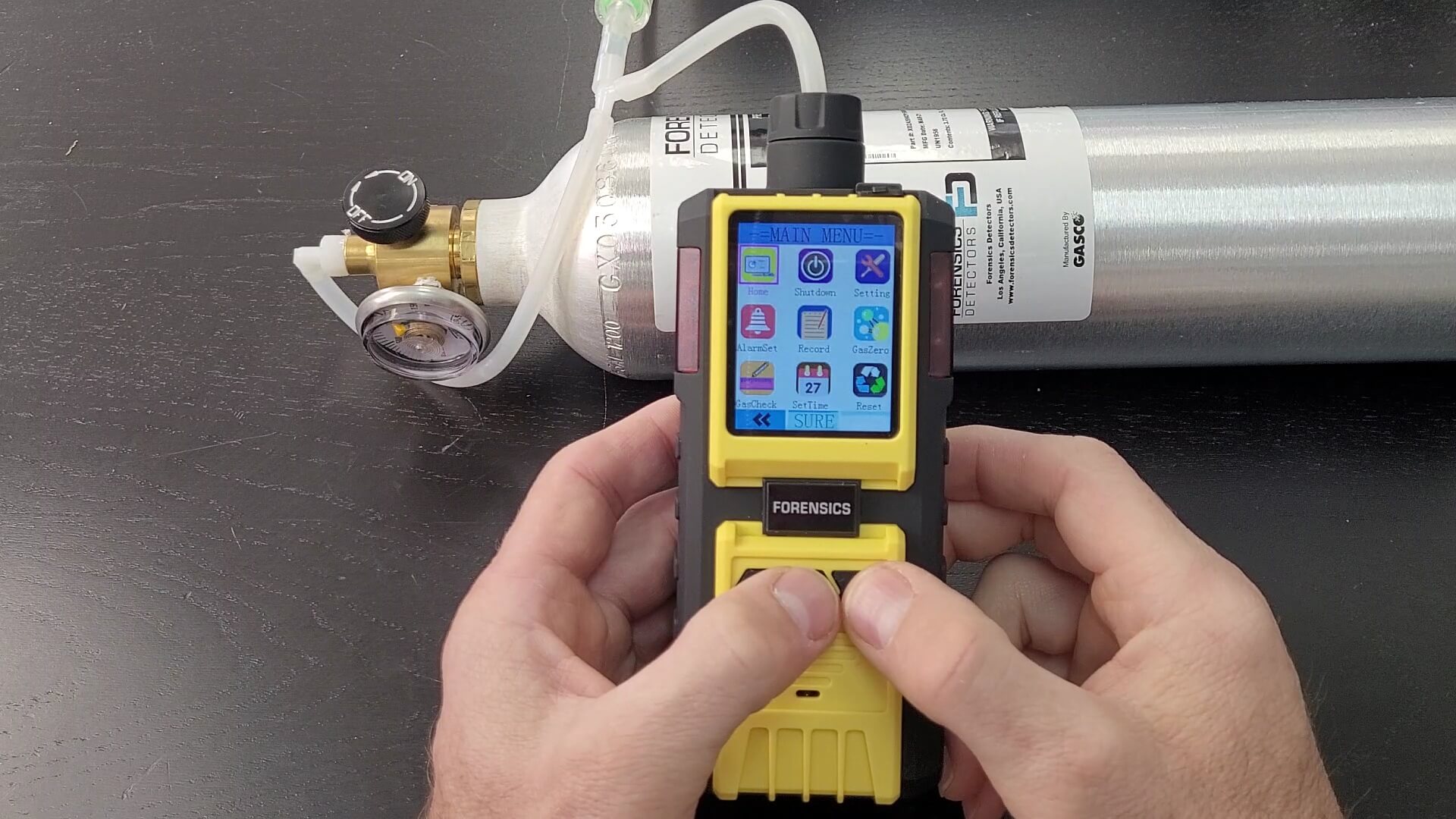
How Should I Store my Carbon Monoxide Leak Detector?
To ensure maximum sensor life and accurate measurements upon operation, it is recommended to store the Carbon Monoxide Leak Detector in a moderate environment with a humidity level of 50%RH and a room temperature of approximately 70F. The unit should be kept in the hard waterproof case it was sold with for optimal storage conditions.
Difference Between a CO2 and CO Leak Detectors?
CO and CO2 are two different gases. People get confused which is unfortunate and can be very dangerous. In fact, many of our customers purchase CO2 leak detectors when they were actually seeking CO detectors.
In other words, CO detectors focus on detecting the toxic gas carbon monoxide, while CO2 detectors monitor carbon dioxide levels as an indicator of indoor air quality and ventilation. Both types of detectors serve important safety and health purposes, but they are designed for different gases and concerns.
Conclusion
- A carbon monoxide leak detector is a device designed to find carbon monoxide leaks used by inspectors in homes, industries, and occupational spaces.
- Carbon monoxide is the most dangerous gas known to man and many are injured due to carbon monoxide inhalation. Early leak detection of carbon monoxide gas can prevent many deaths and injuries.
- A carbon monoxide leak detector should be used with an appropriate pinpoint probe, built-in pump (to increase detection speed), and display carbon monoxide concentration in ppm.
- Be patient and slow when using a carbon monoxide gas leak detector. Ensure the unit is well maintained and used with patience.
Author
This article was written by me, Dr. Koz. I am the President of Forensics Detectors located in California, USA. I am a subject matter expert on gas sensor technology, gas detectors, gas meters, and gas analyzers. I have been designing, building, manufacturing, and testing toxic gas detection systems for over 20 years. I love Gas Detection and Brazilian Jiu Jitsu.
Email: drkoz@gasleakdetectors.com

